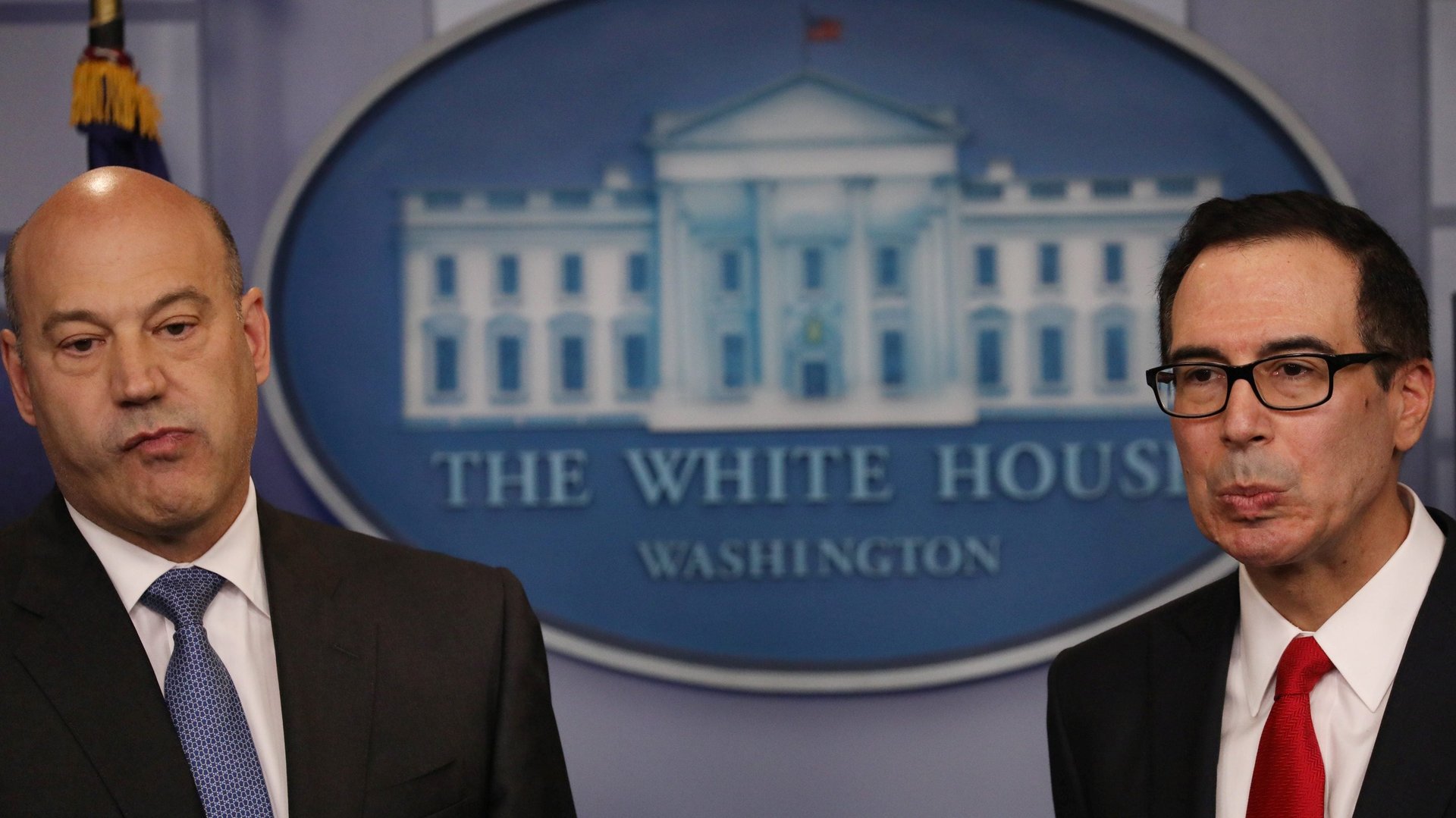Trump’s tax agenda is exciting and ambitious, but who will pay for it?
It is only a dozen bullet points on single page, but it may be the start of the most ambitious US tax reform in decades. Though scant on details, the proposal released yesterday by the White House outlines some bold ideas that have long been tossed around think tanks and academia. Glenn Hubbard, former chair of the Council of Economic advisors under George W. Bush and dean of Columbia Business School, says, “Directionally, I like many elements of it, though I am unclear on many details.”


It is only a dozen bullet points on single page, but it may be the start of the most ambitious US tax reform in decades. Though scant on details, the proposal released yesterday by the White House outlines some bold ideas that have long been tossed around think tanks and academia. Glenn Hubbard, former chair of the Council of Economic advisors under George W. Bush and dean of Columbia Business School, says, “Directionally, I like many elements of it, though I am unclear on many details.”
At first glance it appears regressive: lower top tax rates, repealing the Alternative Minimum Tax, cuts to capital income, and eliminating the estate tax, which, because of its high minimum threshold, applies only to the richest 0.2% of American families.
But how regressive it will actually be is not certain. Gone are deductions that tend to benefit higher earners, like those for state and local income tax. This change, the Financial Times’ Matt Klein points out, will hurt richer people more because they tend to live in high-tax states. Meanwhile the standard deduction for a couple to doubles to $24,000. It will benefit many lower earners; Brookings economist William Gale notes it will increase the number of Americans who don’t pay federal income taxes. And overall, the proposal eliminates almost all the other deductions (except mortgage interest, charitable giving, and retirement) that made the tax code so complicated and gave an advantage to people who could hire fancy accountants.
Getting rid of the maze of deductions, besides making taxes simpler, broadens the tax base, which will eliminate some distortionary behavior as well as gaining more revenue for the government. It is a policy Hubbard advocated for years.
Still, the burning question is whether scrapping deductions will be enough to pay for the huge tax cuts envisaged in the proposal. Hubbard thinks they won’t. And fiscally conservative Republicans are unlikely to pass the bill if it leads to much larger deficits.
Especially when you factor in the tax cuts to corporations. As well as a massive cut of the top corporate tax rate, from 35% to 15%, the plan follows the lead of many other countries in moving from an international tax regime, in which American corporations’ subsidiaries abroad pay both local and US taxes, to a territorial one, in which they pay only local taxes.
There is a good case (pdf) for lowering corporate taxes. They are not a great way to collect revenue, Hubbard says, because it is so easy to move money across borders to lower-tax jurisdictions. The statutory and average (pdf) US tax rates are much higher than they are in other countries that have adopted the territorial system. The changes, Hubbard says, will make US companies more competitive abroad because they won’t have to pay higher taxes than everyone else. They may mean more taxable income for the government, because there will be fewer incentives to game the system, more income earned in the US, and more income reported. It could even have a modest impact on growth.
But Hubbard cautions that any new growth resulting from tax reform won’t be enough to pay for the tax cuts. Even if the US got rid of all of its taxes and moved to a consumption tax (considered the least distortionary of all taxes), GDP would at most grow by 0.5 percentage points per year faster than its current projected rates, far from the 3% target the Trump administration hopes for.
The other glaring omission in the plan is that it doesn’t reform entitlements—Social Security and Medicare, the government health care for the elderly. These ballooning programs are on track to eventually run out of money. Fixing that requires either cutting the benefits they provide, or increasing the payroll tax, which finances them. Assuming Trump’s tax reform passes, there will probably be little political capital or interest left for future tax increases, so that would leave benefit cuts as the only option.
Nonetheless, Hubbard is optimistic. Sketchy as it is, the plan contains many elements on a tax wonk’s wish list: more simplicity, fewer deductions, competitive international rates. The question remains who will ultimately pay for it.